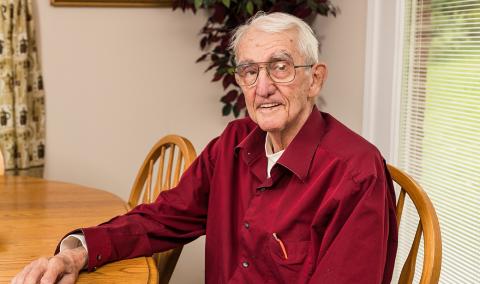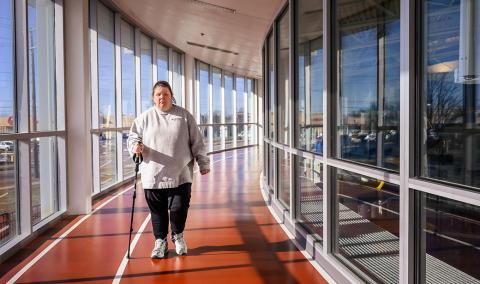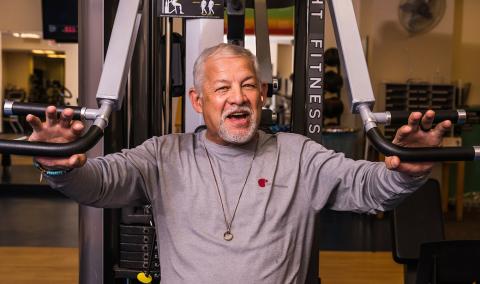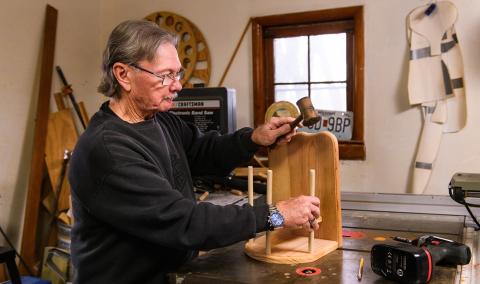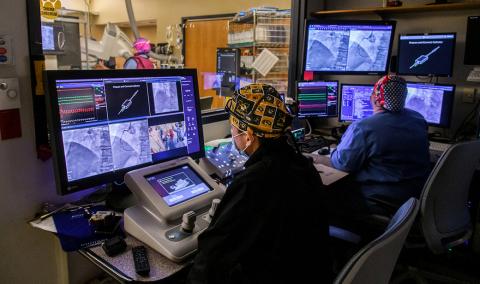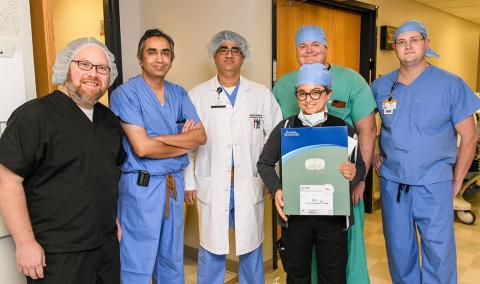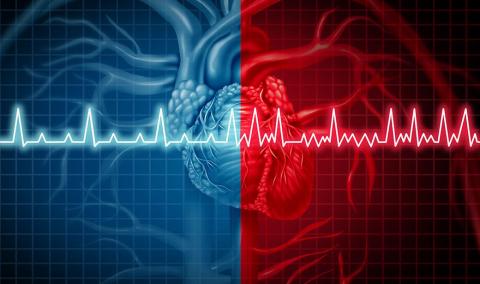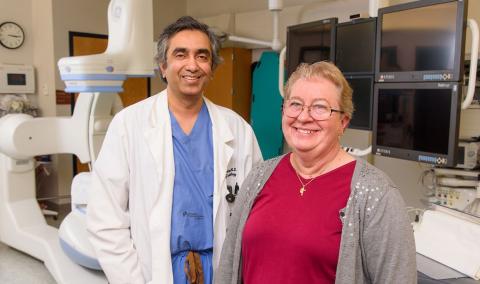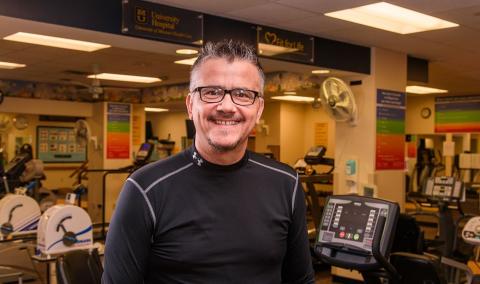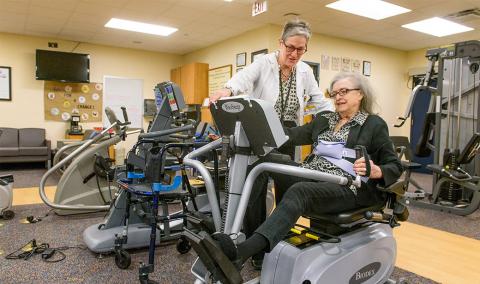When you have chronic total occlusion, one or more of your coronary arteries is completely blocked. If you have chronic total occlusion, our interventional cardiologists can help improve your symptoms and reduce your risks.
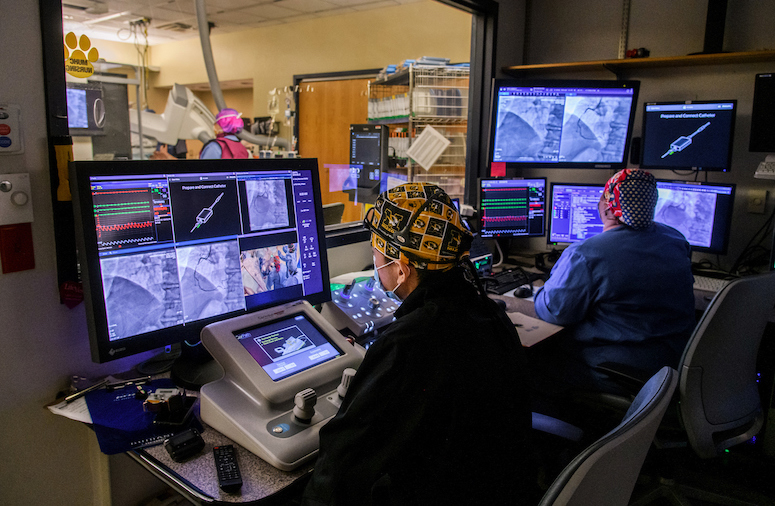
Your coronary arteries supply oxygen-rich blood to your heart so it can pump blood throughout your body. But when you have chronic total occlusion, your blocked arteries reduce blood flow.
Chronic total occlusion can cause chest pain, shortness of breath and serious complications like a heart attack. And although it’s a serious heart condition, it’s treatable.
Our interventional cardiologists specialize in diagnosing and treating chronic total occlusion. They also provide percutaneous coronary intervention (PCI) to improve blood flow — and your quality of life.
Chronic total occlusion symptoms and risk factors
Chronic total occlusion is the most severe form of coronary artery disease. When you have coronary artery disease, the plaque buildup can cause a complete blockage in your coronary artery.
It’s important to know your risk factors and recognize the signs of chronic total occlusion.
Symptoms of chronic total occlusion
Signs of chronic total occlusion include:
- Chest pain or discomfort (pressure or tightness)
- Shortness of breath
- Dizziness
- Fatigue
- Arrythmia (irregular heartbeat)
- Nausea
- Upper arm pain
You would likely experience these symptoms when you are active. However, you may also experience symptoms during rest.
Risk factors for chronic total occlusion
Risk factors for chronic total occlusion are similar to those of coronary artery disease. You may be at risk for chronic total occlusion if you have:
- A history of smoking
- High cholesterol
- Obesity
- Diabetes
- High blood pressure
- A history of heart attack
Diagnosing chronic total occlusion
If you have chronic total occlusion symptoms or risk factors, your doctor will first review your health history.
They may then order the following tests to look for any blockages and where they are.
- Coronary angiogram: Your interventional cardiologist first guides a catheter (a thin tube) through an artery to reach your heart. They then inject a contrast dye into the blood vessels near your heart. This test can show blocked or narrowed blood vessels.
- Electrocardiogram (ECG or EKG): You will wear a device on your chest that has tiny electrodes. These electrodes capture wave patterns that reflect your heart’s electrical activity. Your doctor will analyze these patterns to determine if your heart has any arrhythmias (irregular heartbeats).
- Stress test: You will walk on a treadmill or ride a stationary bike. A technician will monitor how well your heart performs during physical activity.
- Echocardiogram: This test uses ultrasound imaging to create a picture of your heart. These images allow your cardiologist to see how well your heart valves and chambers are working.
- Cardiac MRI: This test takes a scan of your heart using radio wave and magnet technology. It can show how well your heart circulates blood. We are the only hospital in mid-Missouri to offer a cardiac MRI to help diagnose chronic total occlusion.
- PET scan: A technician first injects tracer (a special dye) into a vein in your upper body. The tracer then flows through your heart and produces bright spots on a scan. These bright spots reveal areas of decreased blood flow in your heart.
How we treat chronic total occlusion
Our goals for your treatment are to:
- Prevent further heart damage
- Reduce your risk of additional complications, like heart failure
- Relieve your symptoms
Your interventional cardiologist will work with you to determine the right treatment options for your specific needs.
Medication
Certain medications may help slow plaque buildup in your coronary arteries and relieve some of your symptoms. Some medications may include:
- Aspirin to prevent blood clots
- Beta-blockers, ACE inhibitors and calcium channel blockers to manage blood pressure
- Angiotensin receptor blockers (ARBs) to manage blood pressure and heart failure symptoms
- Statins and other cholesterol medications to lower your cholesterol
- Nitrate medications to relieve angina and chest pain
Procedures
In addition to medications, your cardiologist may recommend a procedure to remove a blockage in your artery.
Our experienced interventional cardiologists and heart surgeons offer both minimally invasive and open-heart surgery, including:
- Percutaneous coronary intervention (PCI): This minimally invasive procedure widens the artery to increase blood flow. Your surgeon first guides a catheter with a balloon tip through your artery toward the affected area of your heart. They then inflate the balloon and place a stent (small mesh tube) to keep the artery open following your procedure.
- Coronary artery bypass grafting (CABG): This open-heart surgery creates a detour for blood to flow around your blockage. Your surgeon first takes a healthy vein or artery from elsewhere in your body. They then attach (graft) the ends of this new blood vessel before and after the blockage, creating a bypass.
Treatments based on your health factors
Our goal is to effectively restore your heart’s blood flow while reducing your risk for complications as much as possible.
If another doctor told you that you’re too high-risk for PCI or CABG, we offer second opinions. Our team has extensive expertise in treating even the most complex cases of chronic total occlusion.
Focus on surgical safety
Our experienced interventional cardiologists can incorporate devices that safeguard your heart during PCI.
For example, we may use an assistive heart pump device, known as the Impella, to support your heart during PCI. This device controls your blood flow during surgery, allowing your heart to work less hard.
Related Conditions & Treatments
- Aortic Disease Care
- Atrial Fibrillation (AFib) and Arrhythmia
- Carotid Artery Disease
- Chest Pain
- Chronic Total Occlusion (CTO)
- Congenital Heart Disease
- Coronary Artery Disease
- Cardiothoracic Surgery
- ECMO Heart and Lung Life Support
- Heart Attack
- Congestive Heart Failure
- Heart Valve Disease
- Pediatric Cardiology
- Pediatric Vascular Anomalies
- Peripheral Artery Disease (PAD)
- Structural Heart Program
- Transcatheter Aortic Valve Replacement (TAVR)
- Vascular Surgery
- Women's Heart Health





